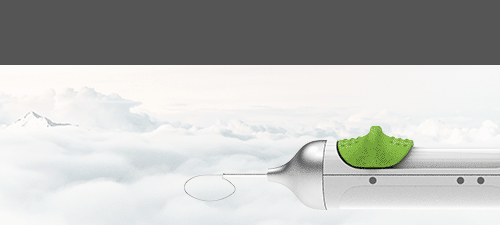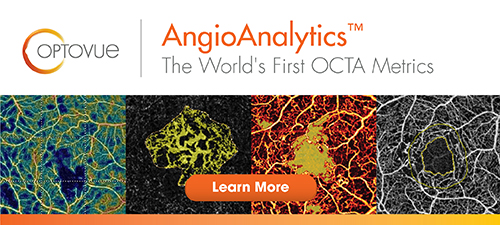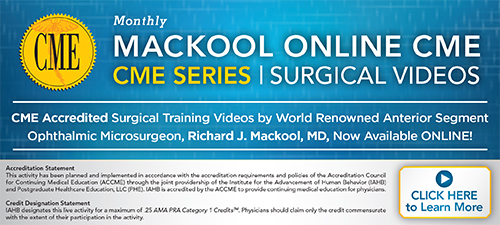
-
GENENTECH UNVEILS POSITIVE PHASE II RESULTS FOR SUSTAINED-DELIVERY OF Ranibizumab
Positive topline results from Genentech’s Phase II LADDER study evaluating the efficacy and safety of its investigational port delivery system with ranibizumab in people with wet age-related macular degeneration revealed that most PDS patients enrolled in the trial went six months or longer between the implantation of the device and the first refill. In addition, the company says that vision outcomes in the high-dose PDS group were similar to monthly ranibizumab injections and were maintained throughout the study period. The small, refillable eye implant, which is slightly longer than a grain of rice, is designed to allow people with wet AMD to go several months without needing to visit their ophthalmologist for treatment. Read more.
-
Apellis’ APL-2 on the Fast Track
Apellis Pharmaceuticals announced that the U.S. FDA granted Fast Track designation to the company’s APL-2, a novel inhibitor of complement factor C3, as a next-generation monotherapy for the treatment of patients with geographic atrophy. Apellis plans to initiate a Phase III trial for patients with GA later this year which will consist of two identical, prospective, multicenter, randomized, double-masked, sham-injection controlled studies to assess the efficacy and safety of multiple intravitreal injections of APL-2 in patients with GA. Read more.
-
Alcon Unveils Next-generation Forceps for Retinal Surgery
Alcon launched Finesse Sharkskin ILM Forceps at the American Society of Retina Specialists annual meeting in Vancouver, Canada. Alcon calls the forceps a “next-generation tool designed to provide increased surgical precision and enhance retina surgery outcomes.” The forceps have a large grasping platform and a textured tip surface, to help surgeons more easily grasp and peel the internal limiting membrane and minimize trauma to the retina in the process, Alcon says, adding that the forceps are designed to deliver an optimized grasping platform to minimize membrane shredding that can be caused by multiple grasping attempts. The laser-ablated micro-structures on the tip surface, which resemble the textured skin of a shark, increase friction between tissue and forceps to improve grip during ILM peeling, the company says. The conforming forceps also provide a 59 percent larger platform in 27 gauge to decrease the closing angle and increase the length of the grasping edge. The forceps are available in 23, 25+ and 27+ gauge sizes. Read more.
Recently, Alcon also launched the new NGENUITY 3D Visualization System with DATAFUSION at the 2018 American Society of Retina Specialists annual meeting. Alcon says that the high-definition screen of the NGENUITY system provides retinal surgeons 3D visualization of the back of the eye with greater depth and detail during surgery than traditional microscopes and now, with the addition of the DATAFUSION software, the system also offers integration with the CONSTELLATION Vision System, the company's platform for vitreoretinal surgery. The company says that the integration of the systems lets surgeons to track key data parameters in real-time, such as intraocular pressure, flow rates, infusion pressure and laser power, on one screen. Read More.
-
FDA Accepts Aerie NDA Submission for Roclatan
Aerie Pharmaceuticals received notification from the U.S. Food and Drug Administration that the FDA completed its initial 60-day review of the new drug application for the glaucoma drug Roclatan (netarsudil/latanoprost ophthalmic solution) 0.02%/0.005%, and determined that the application is sufficiently complete to permit a substantive review. The Prescription Drug User Fee Act goal date for the completion of the FDA’s review is set for March 14, 2019. Read more.
-
Eton Pharma Reports Positive Topline Results from Phase III EM-100 Trial
Eton says that topline results from its Phase III study of EM-100 topical ophthalmic solution revealed that the drug is non-inferior to Zaditor (ketotifen fumarate ophthalmic solution 0.035%; Alcon/Novartis) in the treatment of ocular itching. Furthermore, the product demonstrated statistically significant superiority to placebo at all time points measured, with no adverse events. If approved, EM-100 would be the first topical, preservative-free formulation for the treatment of ocular itching associated with allergic conjunctivitis. Read more.
-
Topcon Introduces Augmented Reality App
Topcon Medical Systems released a new app that makes use of augmented reality technology to provide another dimension to the company’s products and promotional materials. Topcon will roll out the app to support its Image of the Month ad campaign and then expand the app to include ISSOCT Conference, Maestro, Triton and Aladdin applications. Features include an augmented reality scanner and the ability to record, share and save AR experiences. The app is available for download from the Apple Store and Google Play.
-
Foundation Fighting Blindness Urges Congress to Pass Eye-Bonds Legislation
The Foundation Fighting Blindness expressed strong support of a bipartisan bill introduced late July 18, 2018, in the U.S. House of Representatives that the Foundation says holds promise for saving and restoring the vision of the adults and children in the United States who are blind or have severely impaired vision from a variety of conditions, including inherited retinal diseases and age-related macular degeneration. The Faster Treatments and Cures for Eye Diseases Act, H.R. 6421 would allow for the creation of Eye-Bonds, and would fund translational research and advance treatments and cures for blindness and other causes of severe vision impairment. Eye-Bonds fill a critical need because many promising therapies never make it through the translational research process and into clinical trials because of a lack of funding. Eye-Bonds would finance packages of loans that would total $1 billion for new projects over four years in the pilot phase. Underwriters would determine how many projects they would fund and at what amount, not to exceed $250 million in any year. Read more.
|







